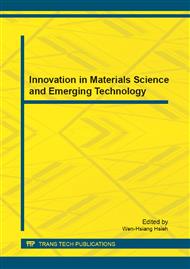p.344
p.349
p.354
p.359
p.364
p.369
p.374
p.379
p.384
Anonymous Authentication for Smart Grid Communications
Abstract:
The smart grid is a network of computers and power infrastructures that monitor and manage energy usage and uses intelligent transmission and distribution networks to deliver electricity for improving the electric system’s reliability and efficiency. With grid controls, energy transmission management could be enhanced and resilience to control-system failures would be increased. Processing chips and storage units have been embedded into traditional electricity meters, so that they are capable of performing smart functions, called smart meters. Then, smart meters communicate with electrical appliances at home as well as the generation and management facilities at the power companies. Although deploying the smart grid has numerous social and technical benefits, several security and privacy concerns arise. Attackers might compromise smart meters, eavesdrop the communication, or hack into the power company’s database, to access power consumption data of the victim, from which they learn about the victim’s daily activities. Recently, various security and privacy vulnerabilities and threats have been studied in the research literature, however, most of the problems remain yet to be addressed. Therefore, it is crucial to design secure smart grid communication protocols that could prevent all possible security vulnerabilities. In this paper, we propose an anonymous authentication protocol for securing communication among various smart meters of the smart grid. The proposed protocol can achieve key agreement between smart meters and fully protect user privacy with low computation overhead. In addition, the analysis shows that the proposed protocol can satisfy the desirable security requirements and resist several notorious attacks.
Info:
Periodical:
Pages:
364-368
Citation:
Online since:
December 2011
Authors:
Keywords:
Price:
Сopyright:
© 2012 Trans Tech Publications Ltd. All Rights Reserved
Share:
Citation:


